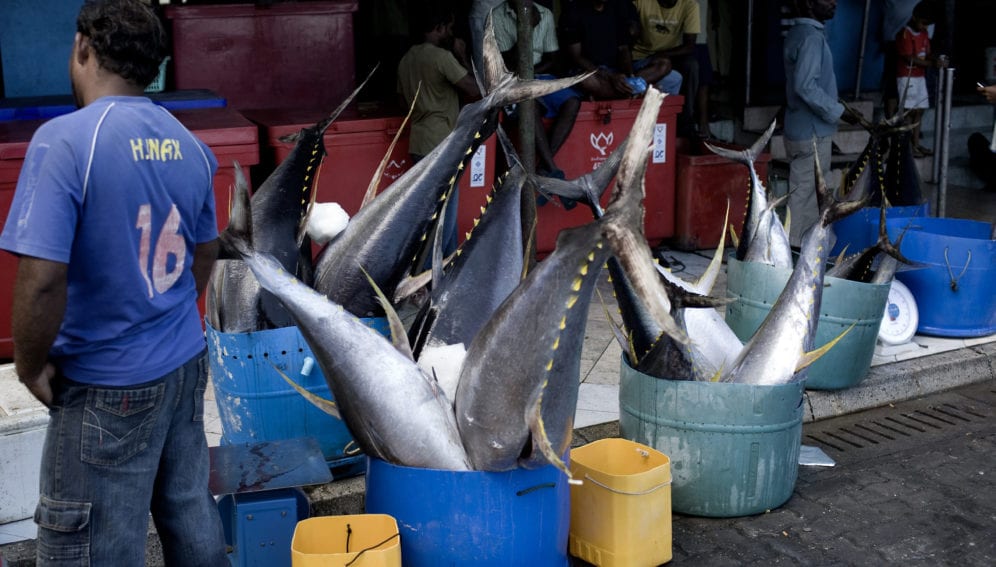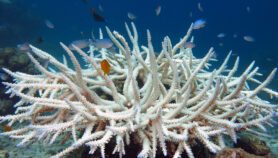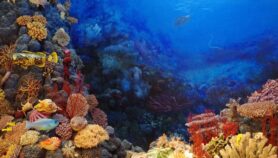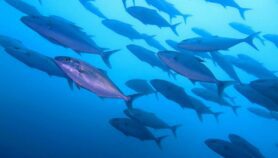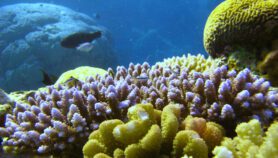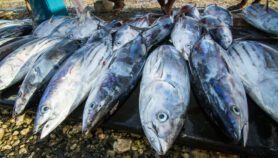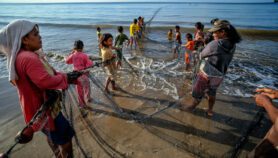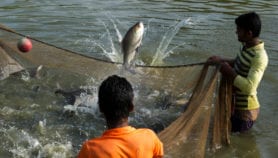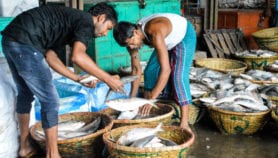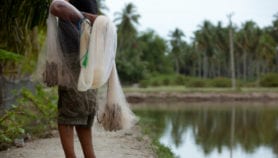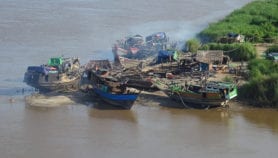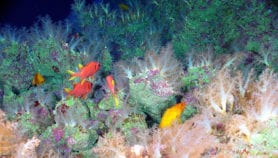By: Prime Sarmiento
Send to a friend
The details you provide on this page will not be used to send unsolicited email, and will not be sold to a 3rd party. See privacy policy.
[MANILA] Member countries and territories of the Western and Central Pacific Fisheries Commission (WCPFC) have agreed to adopt measures to conserve stocks of tropical tuna even as conservation groups criticised the decision to increase the catch limit of bigeye tuna.
According to consensus reached at the 14th regular session of the commission which concluded on 8 December in Manila, the “bridging measures”, such as regulating and monitoring the use of fish aggregating device (FAD) and long lines of baited hooks, will be in place for three years while WCPFC members prepare a comprehensive tuna harvest strategy covering catch limits and spawn stocks.
“Commission members should ensure negotiations start immediately toward a stronger measure next year, to ensure precautionary, science-based management of its fisheries”
Amanda Nickson, Pew Charitable Trusts
“Conservation and management measures shall ensure, at a minimum, that stocks are maintained at levels capable of producing maximum sustainable yield, pending agreement on target reference points as part of the harvest strategy approach,” said the draft agreement (7 December).
The 26-member WCPFC, the governing body for international agreement on migratory fish in the Pacific, are composed mostly of small island states in the Pacific but also include developed countries such as Australia, Canada, Japan and the United States.
The WCPFC said the use of FADs will be prohibited for three months in the exclusive economic zones (EEZs) and two months in the high seas. Exempted are Kiribati-flagged vessels operating in the high seas adjacent to Kiribati’s EEZ and Philippine vessels fishing in corresponding situations.
FADs are semi-permanent floating structure made from any materials used to lure fish such as tuna. But FADs end up trapping other marine animals like sharks, sea turtles and dolphins, and also catch young tuna, precluding them from breeding.
Conservation and public interest groups welcomed the measures, but were critical of the commission’s decision to increase the catch limit of bigeye tuna by nearly 10 per cent. Critics have pointed out that the Commission misinterpreted the Scientific Committee’s report in August as suggesting that the bigeye is not overfished.
Holly Koehler, vice-president, International Seafood Sustainability Foundation, Washington, explains the scientific committee of the WCPFC had referred to uncertainty in the bigeye stock status and recommended to maintain the current level so as not to decrease biomass.
“That’s why we asked that fishing mortality on bigeye and yellowfin tuna stocks not increase from current levels to maintain current or increased spawning levels until the commission can agree on appropriate target reference points,” Koehler tells SciDev.Net.
Amanda Nickson, a director at Pew Charitable Trusts, says raising the catch limit will weigh on the bigeye’s biomass. “Commission members should ensure negotiations start immediately toward a stronger measure next year, to ensure precautionary, science-based management of its fisheries,” she says.The western and central Pacific Ocean accounted for nearly 60 per cent of the global tuna catch in 2016, worth over US$ five billion.
This piece was produced by SciDev.Net’s Asia & Pacific desk.


